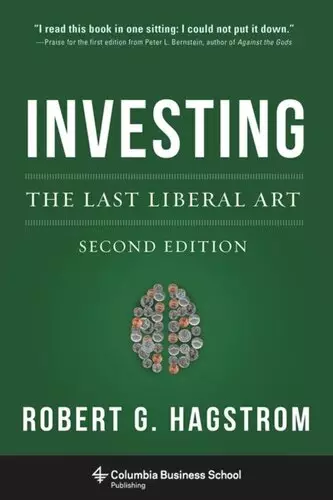
.
1
A Latticework of Mental Models
In April 1994, at the Marshall School of Business of the University of
Southern California (USC), students in Dr. Guilford Babcock’s Student
Investment Seminar got a rare treat: a powerful dose of real- world
knowledge from a man whose thoughts on money are widely considered
priceless.
Charles Munger— Charlie, as he is known throughout the investment
world— is vice chairman of Berkshire Hathaway, the holding company run
by Warren Buff ett, the world’s most famous investor. Trained originally as
an attorney, Charlie is Buff ett’s business partner, friend, and straight man.
He commands attention whenever he speaks.
Charlie Munger is an intellectual jewel somewhat hidden behind his
more celebrated partner. Th e anonymity is not Buff ett’s fault. Charlie simply prefers the lower profi le. Except for his occasional appearances such as
the one at USC and his prominent role at Berkshire Hathaway’s annual
meetings, Charlie remains largely out of public view. Even at those annual
meetings, he deliberately keeps his remarks brief, allowing Buff ett to answer most of the questions from shareholders. But occasionally Charlie
does have something to add, and when he speaks, the shareholders straighten
and shift forward to the edge of their seats, straining to get a better view, to
catch every word.
In Dr. Babcock’s classroom that day in April, the atmosphere was
much the same. Th e students knew whom they were listening to, and they
knew they were about to receive the benefi t of considerable investment
expertise. What they got instead was something infi nitely more valuable.
At the outset, Charlie mischievously admitted that he was about to
play something of a trick on his audience. Rather than discussing the stock
market, he intended to talk about “stock picking as a subdivision of the art
of worldly wisdom.”1
For the next hour and a half, he challenged the students to broaden their vision of the market, of fi nance, and of economics
in general and to see them not as separate disciplines but as part of a larger
body of knowledge, one that also incorporates physics, biology, social
studies, psychology, philosophy, literature, and mathematics.
In this broader view, he suggested, each discipline entwines with, and
in the pro cess strengthens, every other. From each discipline the thoughtful person draws signifi cant mental models, the key ideas that combine to
produce cohesive understanding. Th ose who cultivate this broad view are
well on their way to achieving worldly wisdom, that solid mental foundation without which success in the market— or anywhere else— is merely a
short- lived fl uke.
To drive his point home, Charlie used a memorable meta phor to describe this interlocking structure of ideas: a latticework of models. “You’ve
got to have models in your head,” he explained, “and you’ve got to array
your experiences— both vicarious and direct— on this latticework of models.” So immediate is this visual image that “latticework” has become
something of a shorthand term in the investment world, a quick and easily
recognized reference to Charlie’s approach.
It is a theme he returns to oft en. At the Berkshire Hathaway annual
meetings, for instance, he frequently adds to Buff ett’s answers by quoting
from a book he has recently read. Oft en the quote at fi rst appears to have
no direct link to investing, but with Charlie’s explanation it quickly becomes relevant. It is not that Buff ett’s answers are incomplete. Far from it.
It is just that when Charlie is able to connect Buff ett’s ideas to similar ideas
in other disciplines, it tends to elevate the levels of understanding among
the group.
Charlie’s attention to other disciplines is purposeful. He operates in
the fi rm belief that uniting the mental models from separate disciplines to
create a latticework of understanding is a powerful way to achieve superior
investment results. Investment decisions are more likely to be correct
when ideas from other disciplines lead to the same conclusions. Th at is the




